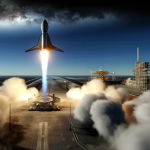An advancement in 3D printing technology emerged as the European Space Agency (ESA) confirmed the successful production of the first metal component in space. This significant development took place aboard the International Space Station (ISS) through the operations of the Metal 3D Printer. The ability to create parts in low-earth orbit has implications for future space missions, reducing reliance on Earth for necessary equipment.
How did the ESA achieve this milestone?
The ESA’s Metal 3D Printer, constructed by Airbus Defence and Space, became operational in June following its arrival in late January. This project marks a collaborative effort between the ESA and NASA, with goals centered on in-space manufacturing (ISM). The first metal part was produced by August, setting a precedent for future manufacturing capabilities in microgravity environments.
After the initial component was created, the ESA plans to produce three additional samples for quality analysis, which will be distributed to various research facilities, including the European Space Research and Technology Centre (ESTEC) in the Netherlands. This research will play a role in assessing the feasibility of using metal parts produced in space for ongoing missions and repairs.
What impact will this technology have on future missions?
The ability to manufacture components in space is pivotal for long missions, especially to the Moon and Mars. Manufacturing capabilities in orbit can significantly decrease the logistical challenges that come with resupplying spacecraft traveling to distant celestial bodies. This approach promises a path towards more autonomous missions, enabling crews to fabricate tools and parts as needed during their journeys.
3D printing technology for in-space applications is not new, as NASA also launched projects involving 3D printing plastic objects on the ISS. These initiatives include the Additive Manufacturing Facility (AMF) and the ReFabricator, which utilizes recycled materials. However, the accomplishment of printing metal in space forms a crucial link in realizing comprehensive manufacturing systems in extraterrestrial environments.
What are the broader implications for space exploration?
The capability to produce machinery and tools on-site in space aligns with long-term human exploration plans beyond Earth’s orbit. Before this development, space missions depended heavily on Earth-supplied components, restricting operations and inflating mission costs. With the advancement of ISM, the focus shifts towards sustainable exploration where equipment needs can be addressed on location.
Looking forward, the advancements in in-space manufacturing hold the promise of modifying how human spaceflight operates. As agencies continue to experiment with 3D printing in various environments—both on the Moon and Mars—the potential exists to utilize local materials, creating a more sustainable approach to space exploration.










